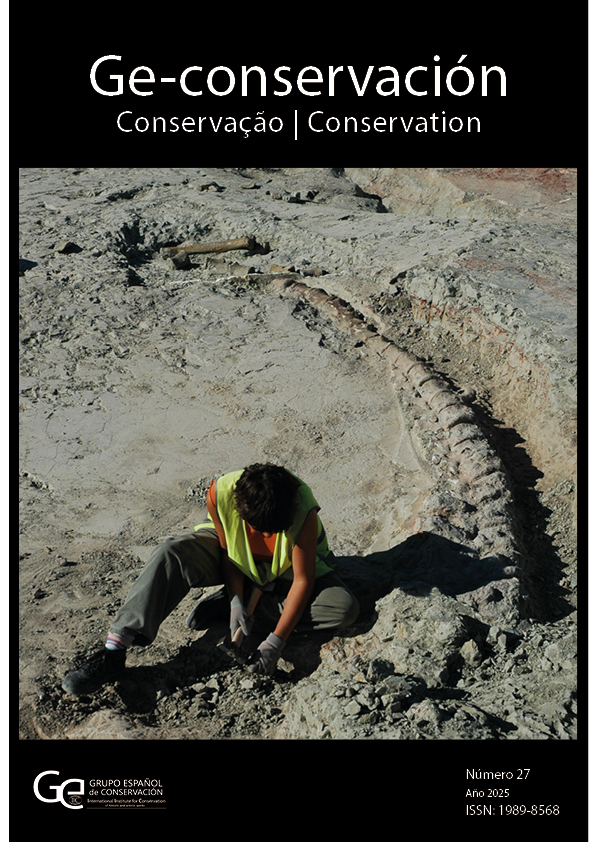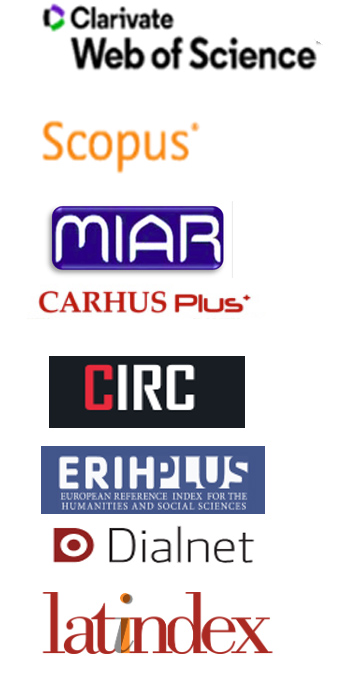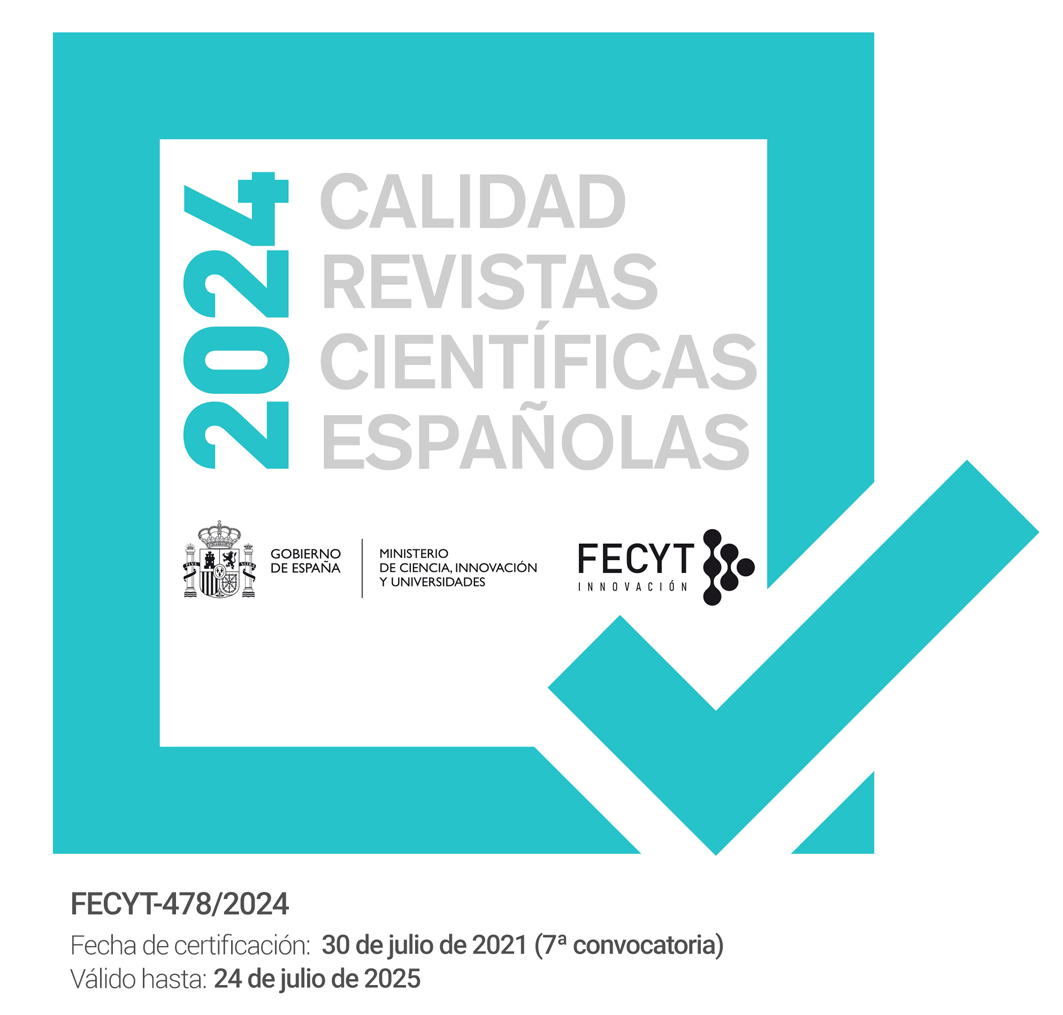Protecting instrumental scientific heritage: the functionality and use versus conservation debate. Tools for preservation, recovery and dissemination
Abstract
Lack of knowledge, lack of resources or the emergence of new technologies are just some of the factors that keep scientific and technical heritage in the shadows of other types of heritage. Functionality is presented as a new indispensable concept when studying both science-related objects and the most appropriate conservation and restoration processes in these collections. The aim of this article is, therefore, to highlight the value of scientific heritage, specifically the instruments, and to reflect the challenges faced by those responsible for this heritage with two examples: the CSIC instruments and the scientific university collections. Moreover, the creation of reproductions or replicas is a very useful tool for preserving and disseminating the scientific instrumental heritage.
Downloads
References
IOSCA, P. (2024). Una vuelta más del legado “olvidado” de Ramón y Cajal: se traslada al Museo de Ciencias Naturales de Madrid. https://www.abc.es/ciencia/vuelta-legado-olvidado-ramon-cajal-traslada-museo-20230704195647-nt.html. [consulta: 27-02-2024].
BOLETÍN OFICIAL DEL ESTADO. Ley 16/1985, de 25 de junio, del Patrimonio Histórico Español. https://www.boe.es/buscar/act.php?id=BOE-A-1985-12534. [consulta: 09-03-2024).
BOLETÍN OFICIAL DEL ESTADO. Ley 8/2023, de 30 de marzo, de Patrimonio Cultural de la Comunidad de Madrid. https://www.boe.es/buscar/act.php?id=BOE-A-2023-18316. [consulta: 09-03-2024).
CAVICCHI, ELIZABETH Y HEERING, PETER (2021). “Using Historical Scientific Instruments in Contemporary Education”. En Historical Scientific Instruments in Contemporary Education, Brill, 1-13.
COMITÉ INTERNACIONAL PARA LA CONSERVACIÓN DEL PATRIMONIO INDUSTRIAL (TICCIH). Carta de Nizhny Tagil Sobre El Patrimonio Industrial (2003). https://www.ge-iic.com/wp-content/uploads/2006/07/Carta_de_Nizhny_Tagil.pdf [consulta: 23-03-2024].
CONSEJO SUPERIOR DE INVESTIGACIONES CIENTÍFICAS. Plan de recuperación de Instrumentación Científica de Interés Histórico del CSIC. https://planinstrumentoshistoricos.csic.es/. [consulta: 09-03-2024].
DEL EGIDO RODRÍGUEZ, M., JIMÉNEZ ALBARRÁN, M.J. Y BAEZA CHICO, E. (2003). “Consideraciones para la conservación de las colecciones de Patrimonio Científico y Técnico”. En RdM. Revista de Museología: Publicación al servicio de la comunidad museológica, Madrid: Asociación Española de Museólogos, 96-104.
DÍAZ MORENO, L. (2024). Consultazione su strumenti scientifici [correo electrónico] a Strano, G. [8 abril 2024].
DÍAZ MORENO, L. (2024). Consulta sobre instrumental científico [correo electrónico] a López Querejeta, M. [12 marzo 2024].
DÍAZ MORENO, L. (2024). Investigación de los materiales del péndulo de Foucault [correo electrónico] al Museo de Artes y Oficios de París. [16 abril 2024].
DÍAZ MORENO, L. (2024). Objeto del Instituto L. Torres Quevedo [correo electrónico] a Gómez Moreno, E. [25 abril 2024].
GACETA DE MADRID. (1935).” Ministerio de Hacienda” en Gaceta de Madrid. Diario Oficial de la República, 11. https://www.boe.es/gazeta/dias/1935/01/11/pdfs/GMD-1935-11.pdf. [consulta: 06-05-2024].
GÓMEZ MOLINA, J.J, CABEZAS GELABERT, L., Y COPÓN, M. (2005). Los nombres del dibujo. Madrid: Ediciones Cátedra. 576 páginas.
GONZÁLEZ BUENO, A. (2003). “Museos de ciencia en las universidades: algunas reflexiones y una descripción”. En RdM. Revista de Museología: Publicación al servicio de la comunidad museológica, Madrid: Asociación Española de Museólogos, 67-71.
GUAL VÍA, M. (2018). “El conservador-restaurador de patrimonio industrial”. En Las Profesiones del Patrimonio Cultural: Competencias, formación y transferencia del conocimiento, Galán-Pérez, A. M. y Pardo San Gil, D (coord.). Madrid: GE-ICC y ACRE, 93-94. https://www.ge-iic.com/2024/07/24/monografico-las-profesiones-del-patrimonio-cultural/
JIMÉNEZ ALBARRÁN, M.J., DE LA LASTRA GONZÁLEZ, I., Y BARATAS DÍAZ, L.A. (2004). “El Museo Nacional de Ciencia y Tecnología: una visión panorámica del patrimonio científico técnico español”. En Actas VIII Congreso de la Sociedad Española de Historia de las Ciencias y de las Técnicas, Logroño: Universidad de La Rioja, Sociedad Española de Historia de las Ciencias y de las Técnicas (SEHCYT), 121-140.
JIMÉNEZ ALBARRÁN, M.J., DE LA LASTRA GONZÁLEZ, I., Y MARTÍN LATORRE, R.M. (2014). “Instrumentos científicos”. En Manual de documentación de patrimonio mueble, Sevilla: Consejería de Economía, Innovación, Ciencia y Empleo y Consejería de Educación, Cultura y Deporte. Proyecto Atalaya, 265-301. https://repositorio.iaph.es/bitstream/11532/300214/2/documentacion_patrimonio_arenillas_torrejon_manual_2014.pdf
MORENO GÓMEZ, E. (2019). Instrumentos de la ciencia española: los aparatos históricos del CSIC. Madrid: Colección Divulgación. Editorial CSIC y Editorial Catarata.
NEWEY, H. (2000). ‘Conservation and the preservation of scientific and industrial collections’, En Studies in Conservation, 45(1): 137–139. https://doi.org/10.1179/sic.2000.45.Supplement-1.137 [consulta 07-10-2024].
OSUNA, M.C., ONRUBIA, M., Y MARTÍN, C. (2022). Catálogo de la Colección de Instrumentos Científicos Históricos. Madrid: Museo Nacional de Ciencias Naturales, CSIC. https://digital.csic.es/bitstream/10261/261135/1/Cátalogo_Colección_%20Instrumentos_Científicos_Históricos_del_MNCN.pdf
SALVADOR BENÍTEZ, A. (2018). “Fotografía científica y documentación del paisaje. El archivo fotográfico Hernández-Pacheco como modelo”. En II Jornadas sobre Investigación en Historia de la Fotografía: 1839-1939, un siglo de fotografía, Zaragoza: Instituto “Fernando El Católico”, 287-302.
DÍAZ CORTÉS, A., RAMÍREZ BARAT, B., LEAL PEREZ-CHAO , J., LLORENTE, I., DEL EGIDO, M., & CANO, E. (2020). Diagnóstico del estado de conservación de colecciones científico-técnicas: extintores históricos del MUNCYT. Ge-Conservacion, 18, 7-19. https://doi.org/10.37558/gec.v18i1.771
- Copyright and intellectual property belongs to author. Author guarantees editing and publishing rights to Ge-Conservación Journal, under a Creative Commons Attribution License. This license allows others to share the work with authorship and the original source of publication acknowledgement.
- Articles can be used for scientific and educational purposes but never for commercial use, being sanctioned by law.
- The whole content of the article is author’s responsibility.
- Ge-Conservación Journal and authors may establish additional agreements for non-exclusive distribution of the work version published at the Journal (for example, on institutional repositories or on a book) with acknowledgment of the original publication on this Journal.
- Author is allowed and encouraged to disseminate his works electronically (for example, on institutional repositories or on its own website) after being published on Ge-Conservación Journal. This will contribute for fruitful interchanges as also for wider and earlier citations of the author’s works.
- Author’s personal data will only be used for the Journal purposes and will not be given to others.









